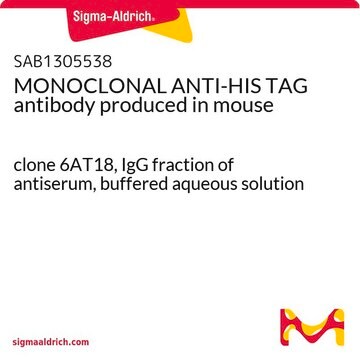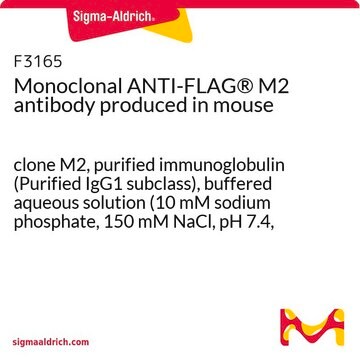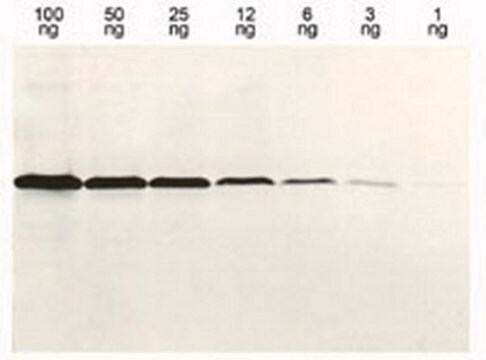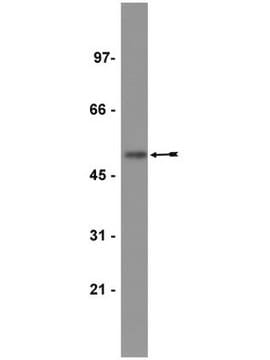SAB4200620
Monoclonal Anti-polyHistidine antibody produced in mouse
clone HIS-1, purified immunoglobulin
Sinónimos:
Monoclonal 6 His epitope tag, Monoclonal 6xHis-tag, Monoclonal HHHHHH epitope tag, Monoclonal Hexa His tag, Monoclonal His-tag, Monoclonal His6 tag, Monoclonal Histidine tagged, Monoclonal Poly-His-tag
About This Item
Productos recomendados
origen biológico
mouse
Nivel de calidad
forma del anticuerpo
purified immunoglobulin
tipo de anticuerpo
primary antibodies
clon
HIS-1, monoclonal
envase
antibody small pack of 25 μL
concentración
~1.0 mg/mL
técnicas
flow cytometry: 3-6 μg/test
immunoblotting: 0.25-0.5 μg/mL
immunofluorescence: 4-8 μg/mL
isotipo
IgG2a
temp. de almacenamiento
−20°C
modificación del objetivo postraduccional
unmodified
Descripción general
Forma física
Almacenamiento y estabilidad
Otras notas
Cláusula de descargo de responsabilidad
¿No encuentra el producto adecuado?
Pruebe nuestro Herramienta de selección de productos.
Código de clase de almacenamiento
10 - Combustible liquids
Clase de riesgo para el agua (WGK)
WGK 1
Punto de inflamabilidad (°F)
Not applicable
Punto de inflamabilidad (°C)
Not applicable
Elija entre una de las versiones más recientes:
Certificados de análisis (COA)
¿No ve la versión correcta?
Si necesita una versión concreta, puede buscar un certificado específico por el número de lote.
¿Ya tiene este producto?
Encuentre la documentación para los productos que ha comprado recientemente en la Biblioteca de documentos.
Los clientes también vieron
Nuestro equipo de científicos tiene experiencia en todas las áreas de investigación: Ciencias de la vida, Ciencia de los materiales, Síntesis química, Cromatografía, Analítica y muchas otras.
Póngase en contacto con el Servicio técnico
















